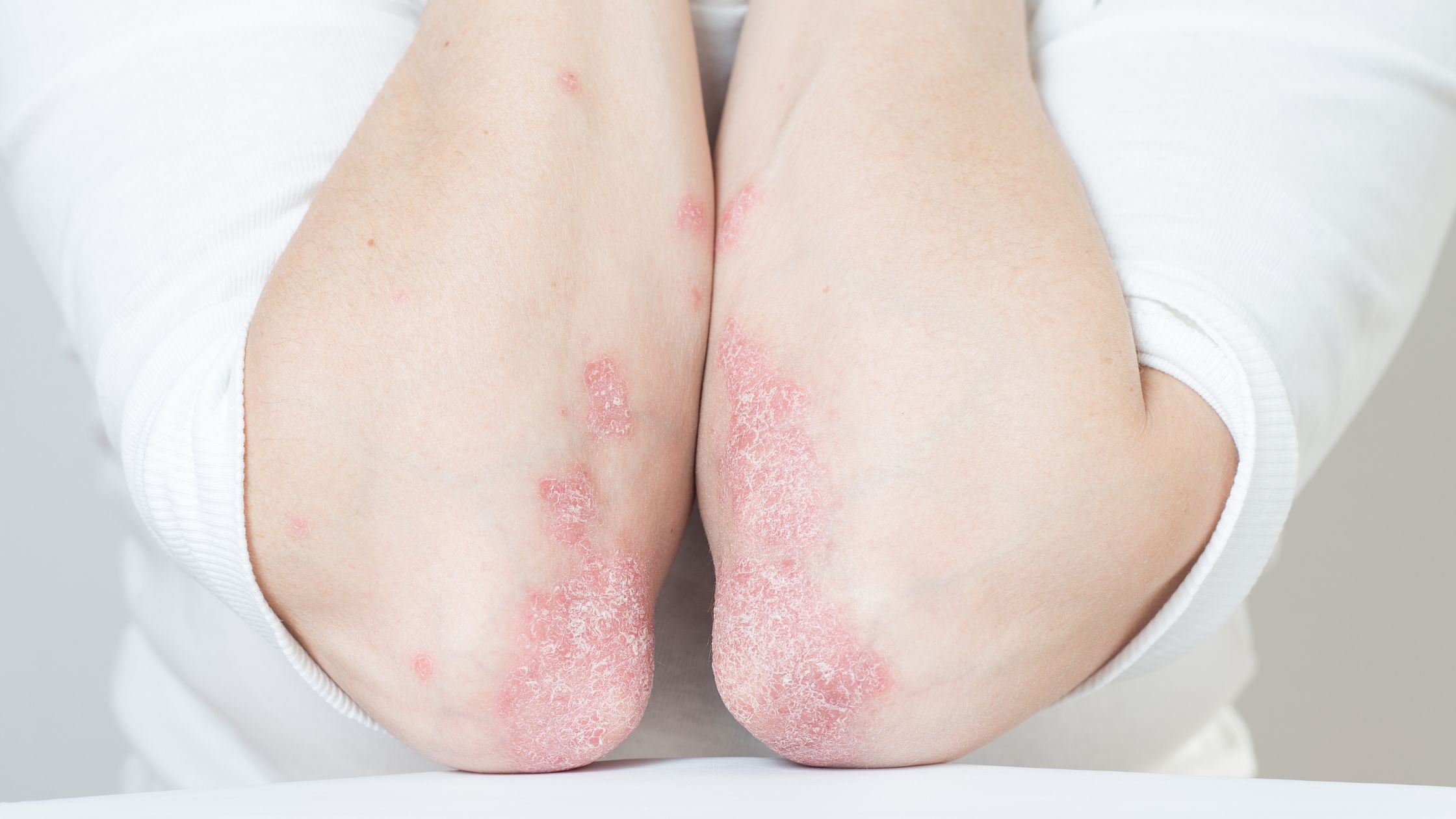Psoriatic arthritis affects many people who have psoriasis, causing joint pain, stiffness, and swelling. Recognizing early warning signs of psoriatic arthritis and getting treated early can lead to better outcomes. Up to 30% of those with the skin condition may develop psoriatic arthritis. The disease can affect any joint in the body and varies from person to person in severity and progression.
What Is Psoriatic Arthritis?
Psoriatic arthritis is an inflammatory condition that occurs when the immune system attacks healthy joints and skin. It often appears in people who have the skin condition psoriasis. Symptoms include mild to severe joint pain, stiffness, and swelling that can affect any part of the body and may come and go in flares.
Who Is at Risk?
Psoriatic arthritis primarily affects people with psoriasis, with about 30% developing the condition. People with a family history are at higher risk due to genetics.. Most cases appear between ages 30 and 50, affecting men and women equally.
Other risk factors include:
- Severe psoriasis with extensive skin involvement
- Genetic markers
- Environmental triggers like infections or physical trauma
- Obesity, which increases inflammation throughout the body
How It Differs From Other Forms of Arthritis
Psoriatic arthritis differs from other kinds of arthritis affecting joints asymmetrically. Sausage digits, also known as Dactylitis, characterized by swollen fingers or toes, are common. Nail changes like pitting, ridging, and separation from the nail bed frequently occur. Unlike osteoarthritis, which results from wear and tear, psoriatic arthritis is linked to immune system dysfunction and occurs along with skin psoriasis.
Common Early Warning Signs of Psoriatic Arthritis
Symptoms may come and go at first and be dismissed. The first sign of psoriatic arthritis might be foot pain in the heel or sole, while others experience lower back pain worsening with rest. Fatigue is another common early sign that can occur even before joint symptoms become obvious.
Joint Pain and Stiffness
Joint pain and stiffness in psoriatic arthritis vary from mild to severe affecting joints near the nails in fingers and toes. Pain develops gradually, accompanied by tenderness, warmth, or throbbing sensations. Many patients experience worsened stiffness after inactivity, especially in the morning or following prolonged sitting.
Swelling in Fingers and Toes
Swelling in the fingers and toes is a distinct symptom. Inflammation impacts the entire digit, causing swelling, redness, and warmth. This may make bending or straightening difficult. Dactylitis can be painful and might limit hand or foot function.
Morning Joint Stiffness
Morning stiffness in psoriatic arthritis can last 30 minutes or more, causing resistance in movement and affecting multiple joints. It may affect multiple joints at once, including the back, knees, hands, and feet.
Reduced Range of Motion
Over time, inflammation can restrict joining movement, which can make daily activities challenging. Without treatment, this limitation in movement can worsen and potentially lead to permanent joint damage.
Skin and Nail Changes Linked to Early Psoriatic Arthritis
Skin and nail changes are often the first visible signs of psoriatic arthritis. Psoriatic arthritis skin symptoms can appear before joint symptoms develop and are important warning signals.
Psoriasis Flare-Ups
Psoriasis flare-ups often precede joint symptoms in psoriatic arthritis patients, showing as silver or gray scaly patches on the scalp, elbows, knees, and lower back. Severity varies, with some experiencing only mild skin irritation mistaken for dry skin. Flare-ups can be triggered by stress, illness, or skin injury, and worsening psoriasis may indicate joint inflammation, even if skin symptoms remain mild.
Nail Pitting, Discoloration, and Separation of the Nail From the Nail Bed
Nail changes are common in psoriatic arthritis, often appearing early. Pitting, discoloration, and brittleness affect multiple fingernails more than toenails, signaling inflammation near joints. Nails can develop a yellow-brown color or white spots. In severe cases, onycholysis causes nail separation, increasing infection risk. This condition often affects frequently used fingers and can be painful. In some cases, the nail falls off. Bacteria and fungi can enter, potentially causing infection.
Less Obvious Early Symptoms to Watch For
Psoriatic arthritis can develop gradually or suddenly, with joint symptoms appearing about 10 years after psoriasis in 85% of cases, although 15% experience joint issues first. The disease progresses with flare-ups, steady worsening, or temporary remission. While joint pain and skin rashes are commonly recognized signs of psoriatic arthritis, less obvious symptoms can appear early in the disease process, including:
- Persistent Fatigue & Malaise: Chronic inflammation depletes energy, causing deep fatigue and disrupted sleep. Symptoms may feel flu-like and worsen over time.
- Eye Inflammation and Vision Changes: Up to 30% of patients develop uveitis, leading to redness, pain, blurry vision, floaters, and light sensitivity.
- Enthesitis (Tendon Pain): Inflammation at tendon attachment sites causes deep aching pain, often in the heel, foot, elbow, and fingers, sometimes mistaken for a minor strain.
When to Seek Medical Advice for Early Warning Signs
If you experience joint pain, stiffness, or swelling—especially if you have psoriasis—see a doctor promptly. Psoriatic arthritis often develops 5-12 years after psoriasis appears, making early detection important. A dermatologist can assess skin and nail changes, while a rheumatologist specializes in joint symptoms. Psoriatic arthritis can run in families. Regular check-ups help catch the condition early, preventing joint damage and disability.
Potential Triggers and Risk Factors
Psoriatic arthritis develops from a combination of genetic, environmental, and lifestyle factors that trigger the immune system to attack healthy joints and skin. Understanding these can help people recognize their risk level and reduce flare-ups.
- Genetic Predisposition: Family history increases psoriatic arthritis risk, with genes like HLA-B27 contributing to susceptibility. About 40% of cases have a family connection.
- Environmental Factors: Infections, trauma, and certain medications can trigger the condition, while cold weather, smoking, and alcohol can worsen symptoms.
- Impact of Stress and Lifestyle: Stress, poor sleep, diet, and excess weight can intensify inflammation, while anti-inflammatory diets may help manage symptoms.
Diagnostic Steps for Early Psoriatic Arthritis
During a physical examination, doctors assess joint inflammation, swelling, and tenderness, particularly in fingers and toes, looking for dactylitis. They examine the skin for psoriasis patches, even behind the ears or on the scalp, and check nails for pitting, ridging, or onycholysis, which can indicate underlying joint issues. Range of motion tests help evaluate joint flexibility, while the spine and lower back are checked for stiffness and discomfort. Since no single test confirms psoriatic arthritis, laboratory and imaging tests are used together to establish a diagnosis, including:
Blood tests:
- Erythrocyte sedimentation rate (ESR) and C-reactive protein (CRP) to measure inflammation
- Rheumatoid factor (RF) test, which is usually negative in psoriatic arthritis
- Anti-CCP antibody test to help distinguish from rheumatoid arthritis
Imaging tests:
- X-rays to check for joint damage and bone changes
- MRI to detect early joint inflammation before it appears on X-rays
- Ultrasound to visualize soft tissue inflammation and small joint changes
Joint fluid analysis may be performed by removing a small sample of fluid from affected joints to rule out other conditions like gout.
Differential Diagnosis Considerations
Psoriatic arthritis mimics some other conditions, making diagnosis complex. Rheumatoid arthritis lacks skin involvement, osteoarthritis affects weight-bearing joints, and gout causes sudden pain, including in the big toe. Reactive arthritis follows infections, while ankylosing spondylitis has distinct genetic markers and spine-related progression.
Treatment Options
Medications are the cornerstone of psoriatic arthritis treatment. Options include:
- NSAIDs (like ibuprofen) to reduce pain and inflammation
- Disease-modifying antirheumatic drugs (DMARDs) to slow disease progression
- Biologics that target specific parts of the immune system
Physical therapy preserves joint function, while hot and cold therapy eases stiffness and inflammation. Steroid injections may help during severe flares, and regular rheumatology check-ups ensure effective treatment adjustments.
Take Action Early for Better Joint Health
If you’re experiencing unexplained joint pain, swelling, morning stiffness, or nail changes—and especially if you have psoriasis—these are early signs of psoriatic arthritis, and early treatment can make a difference. Portland Wellness Care offers expert guidance for symptom evaluation and early detection. Whether it’s a first flare-up or ongoing discomfort, their medical team provides compassionate care and timely support. Don’t ignore the warning signs. Call Portland Wellness Care or walk in today for an evaluation and peace of mind.






